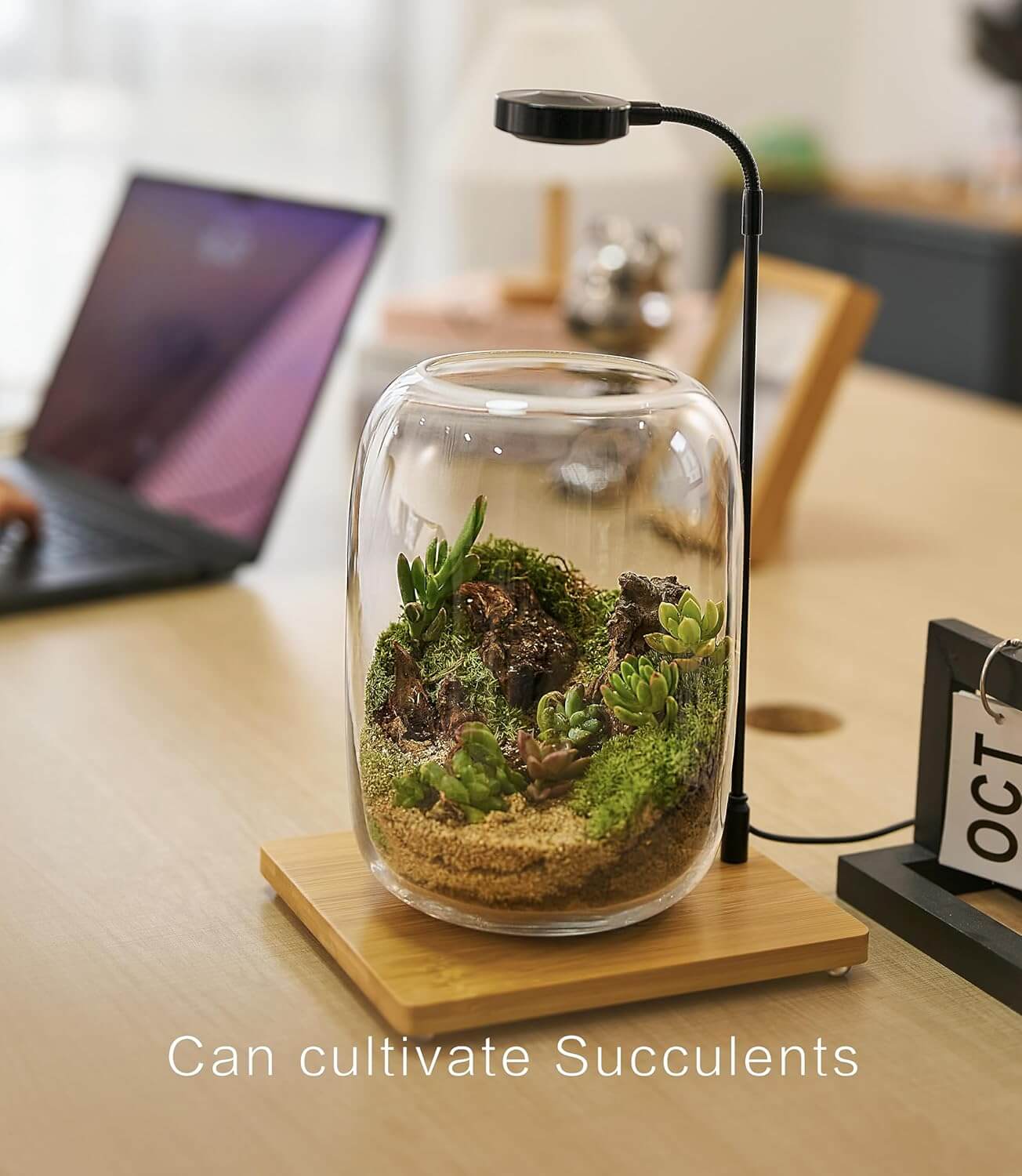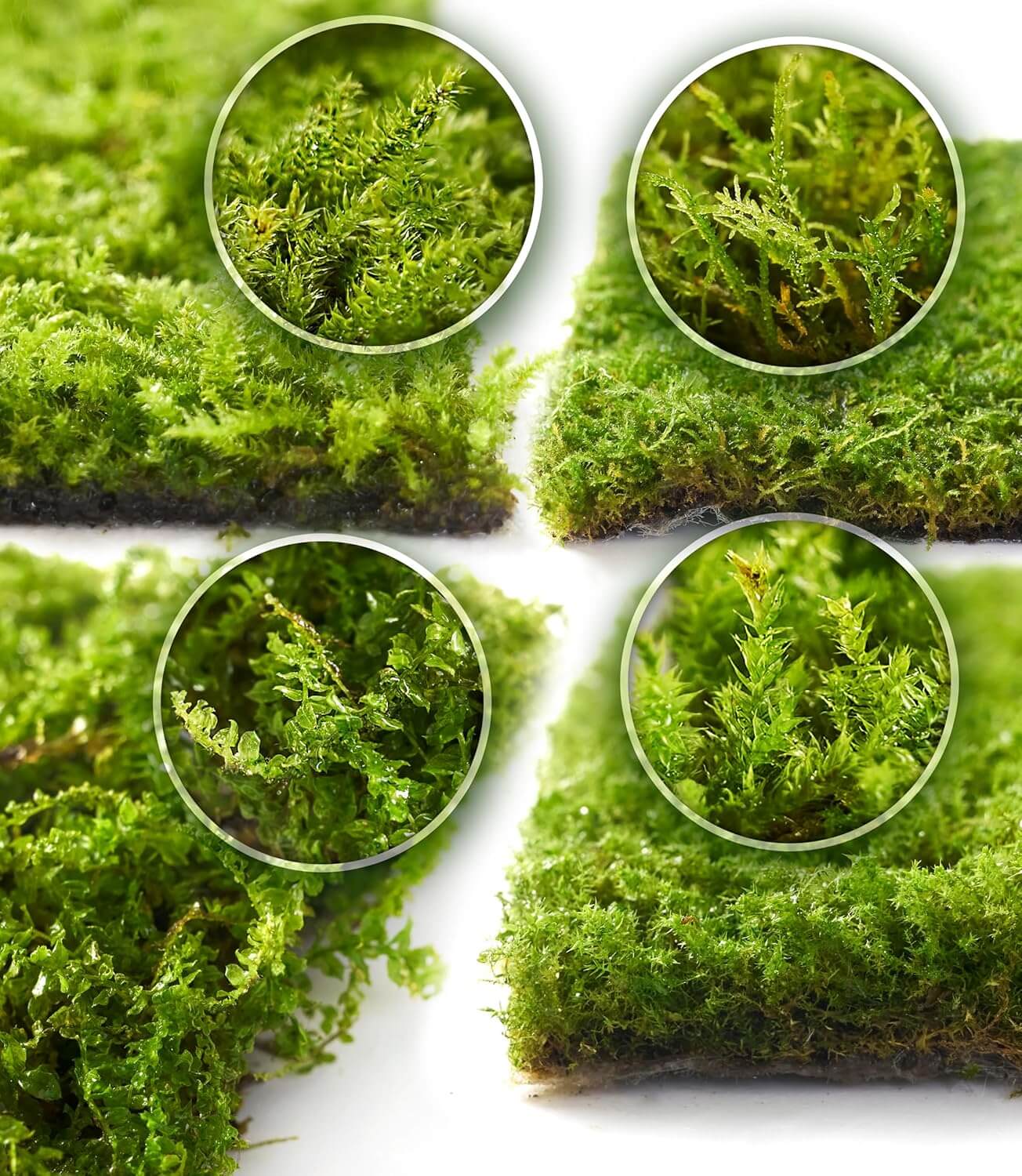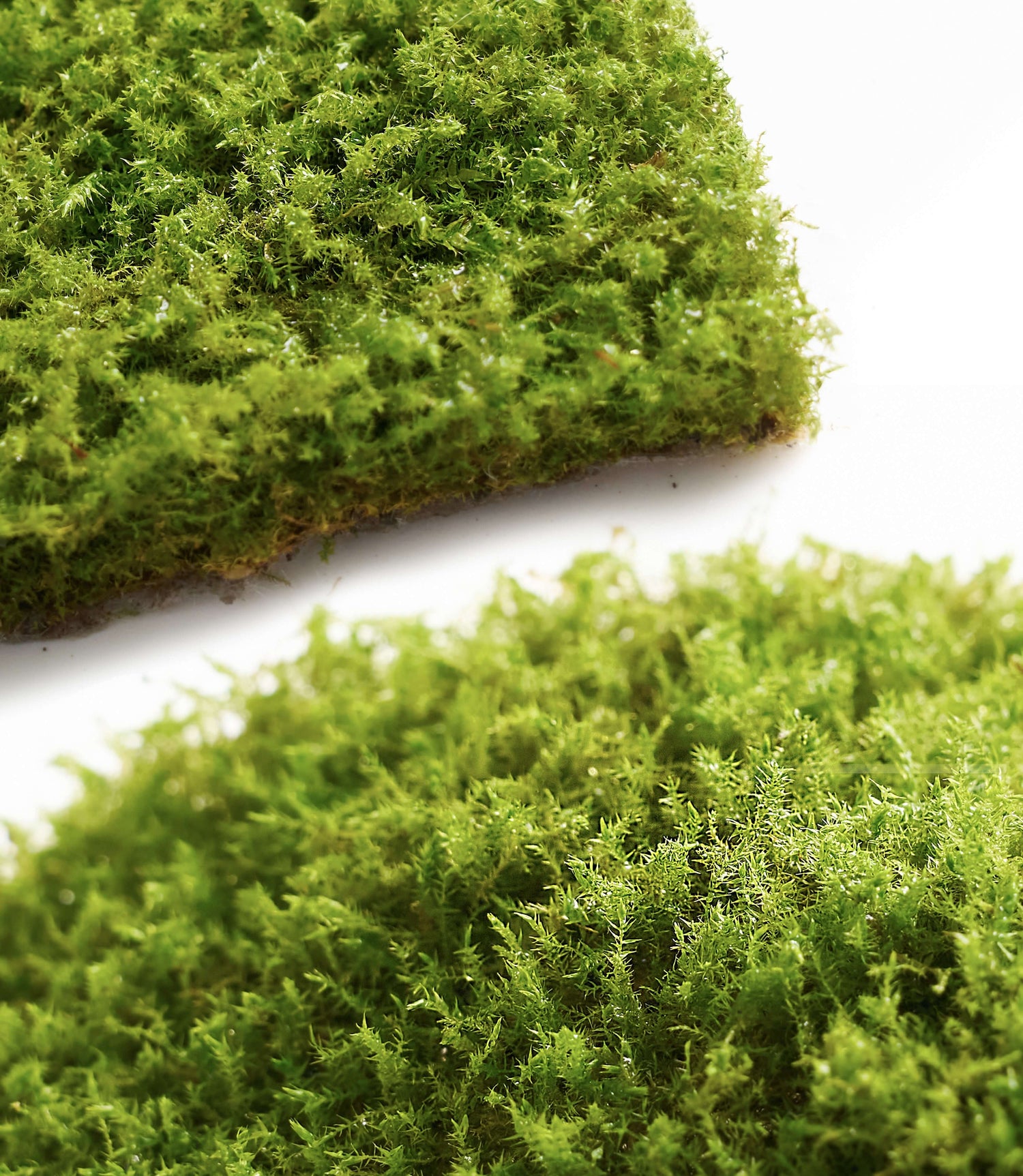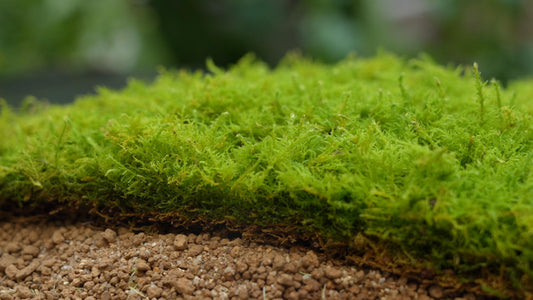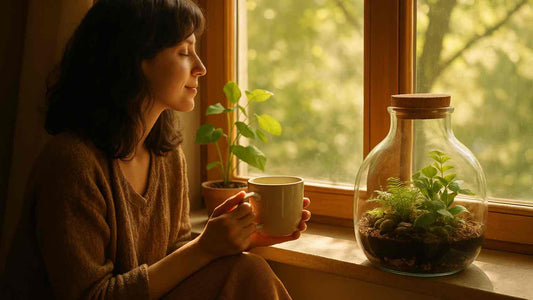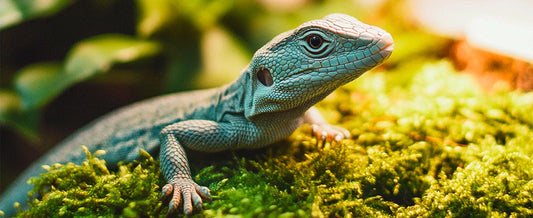How to Keep Bonsai Moss Green During Fall & Winter
A bonsai is more than art—it’s a living dialogue between people and nature. Many growers add live moss to bonsai soil for greenery and layered beauty. But when fall and winter arrive, indoor air gets drier, light becomes weaker, and ventilation drops. The result? Bonsai moss may turn yellow, dry, or even develop mold patches.
The good news: with the right care, bonsai-safe live moss can stay fresh and green even through the colder months. Here’s how.
Why Does Moss Struggle in Fall & Winter?
- Dry Air: Heating systems lower indoor humidity, and moss loses water more quickly. Aim to keep the room at 30–50% RH.
- Low Light: Short days and weak light reduce photosynthesis. Moss tolerates shade but still needs steady light to stay green.
- Temperature & Heat Sources: Hot, dry airflow from heaters or fireplaces—or nightly chills near cold windows—can stress moss (yellowing before drying).
- Poor Ventilation: Closed rooms trap condensation after misting, increasing the risk of mold.
Winter Bonsai Moss Care Tips
1. Light Management
- Place bonsai in bright, indirect light—avoid direct sun or hot glass.
- If the room is too dim, use an LED grow light for 8–12 hours/day (4000–6500 K). Consistent lighting is key for vibrant live moss for bonsai.
2. Humidity Control (Room vs. Surface)
- Keep room humidity at 30–50% RH; avoid sustained >60% to prevent mold. Use a small humidifier nearby if needed.
- At the moss level, mist lightly with a fine spray to keep the surface damp. After spraying, ventilate for 10–15 minutes to let water vapor clear.
3. Watering (Signal-Based, Not Calendar-Based)
- Rolled leaves / dry feel → mist lightly.
- Leaves open / surface dew present → hold back.
- Rely on misting, not heavy watering. Large amounts can saturate bonsai roots and cause rot.
- Water quality matters: distilled / RO / rainwater reduces glass residue and soil salt buildup.
4. Temperature Management
- Aim for a stable 57–68°F (14–20°C).
- Keep bonsai away from heaters, vents, fireplaces, and cold drafty windows.
5. Trimming & Hygiene
- Clip yellow or overgrown moss. Remove clippings and fallen leaves.
- Ventilate after misting—this is critical to prevent mold.
6. Bonsai-Specific Notes
- Allow moss to cover soil for greenery and erosion control, but don’t let moss creep up trunks or root collars. Constant dampness there may damage wood and cause decay. Keep the tree base visible and breathable.
7. Resurfacing & Species Choice
- For stable winter coverage, consider hardy species like Bryum argenteum (silver moss, often called a “Kyoto moss” equivalent). It tolerates disturbance and holds color better through fall and winter.

Aesthetic & Seasonal Value
- Natural Display: Fresh moss highlights the bonsai trunk and roots, perfect for exhibitions.
- Holiday Decor: Add pebbles, wood chips, or small ornaments for festive green.
- Indoor Therapy: A patch of green on your desk helps ease winter “gray fatigue.”
FAQ
Q1: What should I do if my bonsai moss turns yellow in winter?
Check light and ventilation. Increase light to 8–12 hours/day with supplemental LEDs, ensure mist droplets dry within a few hours, and add light misting only if still dry. Trim away yellowed patches.
Q2: Can I just water the bonsai soil heavily to keep moss moist?
Not recommended. Keep the moss surface lightly damp with fine misting. Heavy watering risks root rot in bonsai.
Q3: Can I replant fresh moss onto my bonsai in winter?
Yes. Choose bonsai-safe moss like Bryum, Hypnum, or Brachythecium. Lay it thinly on soil, away from trunks and root collars.
One-Line Summary
For evergreen bonsai moss in fall and winter, the keys are steady but not hot light, moist but not soggy surfaces, and post-misting ventilation. Think of moss as a green carpet, but remember: the bonsai tree is the main actor. Keep the base clear and airy, and both moss and tree will thrive year-round. 🌿

